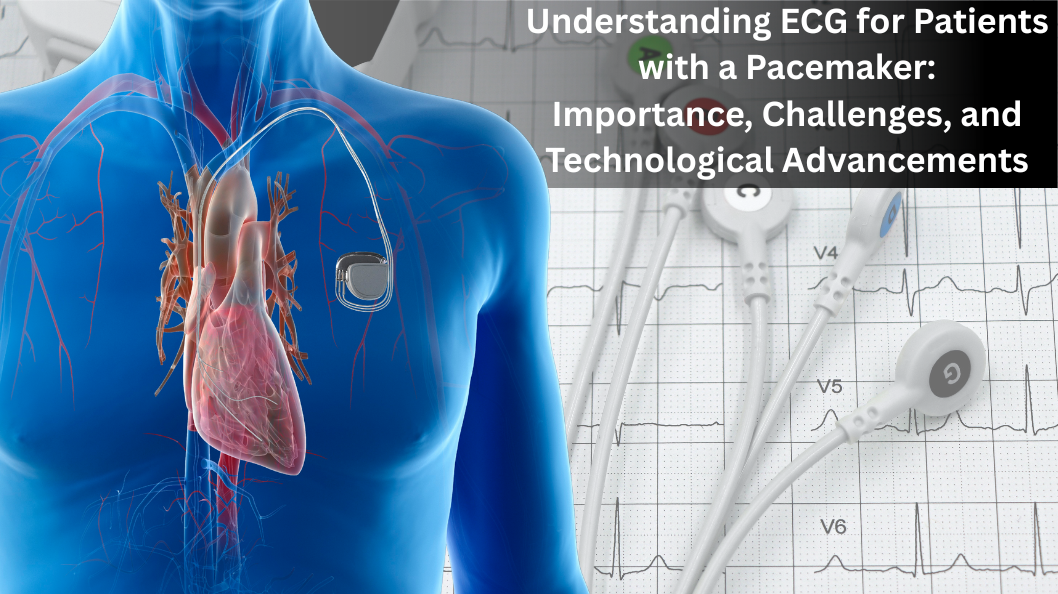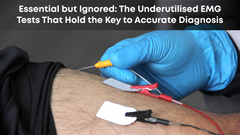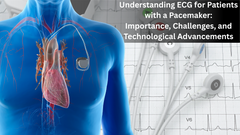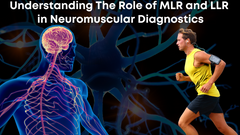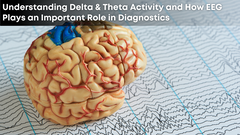Understanding ECG for Patients with a Pacemaker: Importance, Challenges, and Technological Advancements
Electrocardiography (ECG or EKG) is a cornerstone in modern cardiology, providing critical insights into the electrical activity of the heart. However, for patients who have a pacemaker implanted, interpreting ECG results becomes more complex. The presence of a pacemaker introduces unique challenges to ECG readings, making it essential to use advanced ECG machines that can detect and differentiate pacemaker signals from intrinsic cardiac activity. With growing cardiovascular risks and an aging population, the need for accurate ECGs in pacemaker patients has never been more vital. Companies like Clarity Medical are leading the charge in addressing this need with sophisticated, intelligent ECG systems designed for modern healthcare.
What is a Pacemaker?
A pacemaker is a small, battery-operated medical device implanted in the chest or abdomen to help control abnormal heart rhythms, also known as arrhythmias. It works by sending electrical impulses to the heart muscles to maintain a normal heart rate and rhythm when the heart's natural pacemaker (the sinoatrial node) is not functioning properly.
Pacemakers are typically prescribed for patients with:
- Bradycardia (a heart rate that is too slow)
- Heart block (a delay or blockage of the heart's electrical signals)
- Atrial fibrillation or tachy-brady syndrome
- Post-cardiac surgery complications or age-related rhythm abnormalities
Modern pacemakers come with programmable features and sensors that adapt to the body's activity level, ensuring an optimal heart rate during different physical states.
What Challenges Do Pacemakers Present in ECG Readings?
While pacemakers significantly improve patient outcomes, they introduce complications in ECG interpretation. A standard ECG records the heart’s electrical activity through electrodes placed on the body. In a patient with a pacemaker, both intrinsic heart signals and artificial pacing signals appear on the ECG trace. This overlapping can lead to:
- Pacing Spikes Misinterpretation
Pacemaker signals are typically represented as sharp vertical lines, known as "pacing spikes," on the ECG. However, these spikes can sometimes be very small or masked by electrical noise, making them difficult to detect. In some cases, they might be misinterpreted as artifacts or abnormal heart activity.
- Undetected Pacemaker Function
In case of the absence of pacing spikes or malfunctioning leads, healthcare providers may assume the pacemaker isn’t working or misread the ECG. Without a device that identifies pacemaker-specific signals, diagnosis becomes uncertain.
- Inaccurate Diagnosis of Arrhythmias
An ECG machine that cannot distinguish between natural cardiac signals and pacemaker signals may report false arrhythmias or fail to detect real ones, leading to inappropriate treatment decisions.
- Pacing Mode and Timing Confusion
Different pacing modes (e.g., single-chamber, dual-chamber, biventricular) produce different ECG patterns. In a poorly configured ECG system, identifying whether a rhythm is paced or native becomes confusing, especially in emergency settings.
Why ECG with Pacemaker Detection is Crucial
Given the rising number of pacemaker implants globally, it’s essential for ECG machines to support pacemaker detection for accurate clinical assessment. Here's why:
- Improved Diagnostic Accuracy
With pacemaker detection features, the ECG can differentiate between paced and intrinsic beats, helping clinicians correctly interpret the heart rhythm. This is especially important in assessing the effectiveness of the pacemaker and in diagnosing underlying or concurrent arrhythmias.
- Monitoring Pacemaker Function
Routine ECGs help assess whether the pacemaker is capturing the heart effectively. Detecting pacing spikes confirms the device is functioning and responding correctly to the patient’s needs.
- Guiding Therapy Adjustments
Accurate ECG readings in pacemaker patients are critical when changing medications, adjusting pacemaker programming, or planning interventions like cardioversion or device replacement.
- Better Emergency Care
In emergency departments or during transport, where time is critical, an ECG with pacemaker detection helps frontline responders quickly understand the patient's cardiac status and the contribution of the pacemaker.
Modern ECG Devices: Meeting New Challenges
Traditional ECG machines were not equipped to handle the complexities presented by pacemaker signals. Today, modern ECG systems have evolved to include advanced digital filtering, high-resolution signal processing, and automated pacemaker detection algorithms.
Some of the key features found in modern ECG devices include:
- High sampling rates to detect minute pacing spikes
- Dedicated pacemaker detection modes
- Digital filters that eliminate artifacts without distorting pacing spikes
- Paced rhythm labelling in ECG interpretation reports
- USB or cloud-based data storage for long-term analysis
These advancements make a significant difference in the accuracy and utility of ECG for pacemaker patients, especially in critical care, home monitoring, and emergency environments.
Clarity Medical’s ECG Solutions: Built for Today’s Cardiac Needs
Clarity Medical, a leading name in India’s medical technology sector, offers a comprehensive range of ECG devices designed with the future in mind. With a strong emphasis on accuracy, portability, and data intelligence, Clarity’s ECG systems come equipped with features specifically engineered for pacemaker detection and advanced arrhythmia analysis.
Clarity Medical also integrates cloud compatibility and AI-powered analytics into select ECG systems, offering physicians remote access to ECG results and decision support tools, particularly useful for long-term follow-up in pacemaker patients.
The Future of ECG in Pacemaker Patients
As cardiac technologies evolve, the number of patients living with pacemakers will continue to grow. This places new responsibilities on diagnostic devices to keep pace with patient needs. Healthcare institutions must prioritize upgrading their ECG systems to ensure they support pacemaker detection and provide clinicians with actionable data.
Medical device innovators like Clarity Medical are responding to this call with cost-effective, technologically advanced, and clinician-friendly solutions. These tools not only enhance patient safety but also reduce diagnostic errors, leading to more confident treatment decisions and improved outcomes.
Conclusion
ECG remains an indispensable tool in cardiology, but for patients with pacemakers, standard ECG interpretation is not sufficient. Accurate detection and analysis of pacemaker activity are critical to ensure proper monitoring, treatment, and peace of mind for both patients and clinicians. With modern ECG technology, like that developed by Clarity Medical, the future of cardiac care, especially for those relying on implanted devices, is more precise, responsive, and patient-centred.


